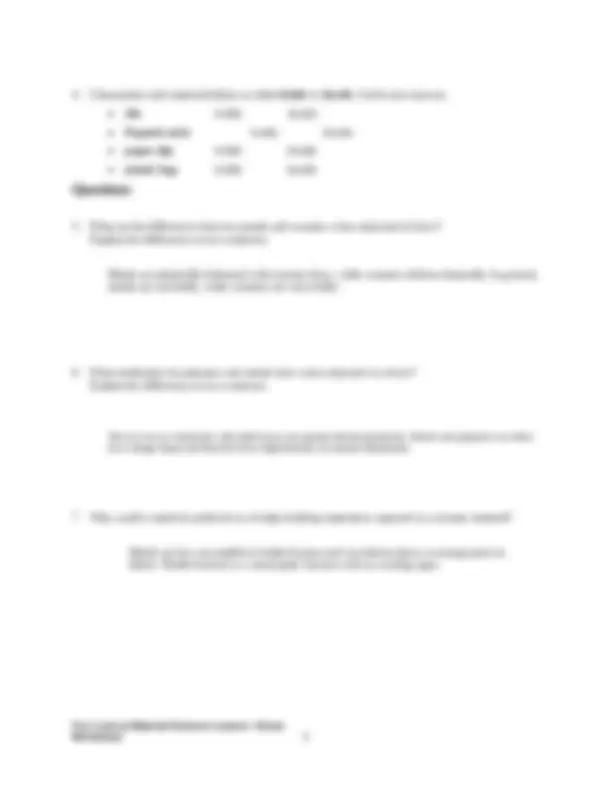



Study with the several resources on Docsity

Earn points by helping other students or get them with a premium plan


Prepare for your exams
Study with the several resources on Docsity

Earn points to download
Earn points by helping other students or get them with a premium plan
Community
Ask the community for help and clear up your study doubts
Discover the best universities in your country according to Docsity users
Free resources
Download our free guides on studying techniques, anxiety management strategies, and thesis advice from Docsity tutors
Assignment in mse for reproduction and materials
Typology: Exercises
1 / 2

This page cannot be seen from the preview
Don't miss anything!


B tile A. metal
C^ Popsicle stick^ B.^ ceramic
D^ plastic bag^ C.^ composite A^ paper clip^ D.^ polymer
tile: elastic plastic Description: Material did not permanently bend or change shape. Popsicle stick: elastic plastic
Description: The metal is elastic. The main deformation, however, is plastic. The material could bend (very compatible), but it returns to its original position. No constant change of form. paper clip: elastic plastic
Description: Permanent shape change when bent. plastic bag: elastic plastic Description:
Under slight pulling, the plastic bag was rather elastic, but it was plastically deformed when pulled more strongly.
tile : Before the fracture no bending was visible. Rapid (brittle) fracture, no plastic behavior.
Popsicle stick :
Before fracture there is no visible deformation. Fibrous fracture, and the ceramic tile does not fail completely. Composites can produce mixed mode fractures, which means that the first phase is like a ceramic or more elastic, while the second one is like a metal or plastic.
paper clip :
Permanent visible set or plastic behavior before fracture. Multiple times before the fracture had to bend clip. Extreme plastic behavior.
plastic bag : Visible permanent set or plastic behavior prior to fracture.
Fun Look at Material Science Lesson—Demo Worksheet 1
Metals are plastically deformed with extreme force, while ceramics deform elastically. In general, metals are not brittle, while ceramics are very brittle.
The two can act elastically with mild forces, but mainly deform plastically. Metals and polymers can defor m or change shape and therefore have high ductility to extreme dimensions.
Metals are less susceptible to brittle fracture and can deform (give a warning) prior to failure. Brittle fracture is a catastrophic fracture with no warning signs.
Fun Look at Material Science Lesson—Demo Worksheet 2